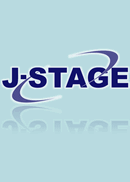All issues

Volume 11 (2001 - 200・・・
- Issue 3 Pages 1-
- Issue 2 Pages 1-
- Issue 1 Pages 3-
Volume 11, Issue 1
Displaying 1-6 of 6 articles from this issue
- |<
- <
- 1
- >
- >|
-
Masaru Yoshimori2001 Volume 11 Issue 1 Pages 3-29
Published: August 01, 2001
Released on J-STAGE: November 27, 2012
JOURNAL FREE ACCESSCorporate governance, by definition, consists of three components: the concept of the corporation which determines the key stakeholder, the oversight mechanism over the management, and the compensation system for the management designed to promote their entrepreneurship. The concept of the corporation is, therefore, the basis on which the corporate governance system is built. Since the middle of the '90s the Anglo-American shareholder primacy has provoked widespread debates in Japan, Germany and France as to who the key stakeholder is. The outcome of such discussions is not yet conclusive with opponents, supporters and the middle ground deploying their respective arguments.
It is not well known in Japan that, even in the United States, managers who believe in the shareholder primacy are in the minority, with the majority convinced that they are accountable not only to shareholders but also to the stakeholders. Moreover a number of different anti-takeover mechanisms installed by US managers are contrary to the interests of shareholders, as they are deprived of the opportunity to realize high takeover premiums in case of a contested takeover. US top executives also exercised their influence on politicians of the State where their company is registered to amend State corporate laws so that hostile takeovers would be more difficult. Lastly, the shareholder primacy is not supported by the majority of the American citizens.
The superiority of the US corporate governance system, however, lies in its monitoring effectiveness. Independence of outside directors, detailed definitions of director independence by the SEC, IRS and public pension funds, fairness, effectiveness, liquidity and transparency of the stock market, shareholder activism by public pension funds, and various Board committees including the Audit Committee, Nominating Committee, and Compensation Committee.
Japanese attempts at Board reforms should draw lessons from this US oversight effectiveness and be focused on the formalization of the principles of corporate governance, strengthening of the internal audit of operations, introduction of independent outside directors, installment of Board committees, age limit for directors and benefits for long-term shareholders to replace crossshareholdings.View full abstractDownload PDF (6072K) -
Michikazu Aoi2001 Volume 11 Issue 1 Pages 31-44
Published: August 01, 2001
Released on J-STAGE: November 27, 2012
JOURNAL FREE ACCESSThis paper focuses on the system design agenda of the corporate governance structure for Japanese firms. Japanese firms that had once enjoyed the Japanese dreams of the late 80' s now face many difficulties in strategies, organizations and particularly management systems. These have resulted from the shift of the environment which surrouns them. The rules of the game have changed drastically and Japanese firms have to rearrange or redesign what they once thought to be right.
Many lessons can be learned from the corporate governance systems of the U. S. A. and the U. K., but most of the difficulty lies on the type of capitalism for which they stand. The relational-based capitalism on which they are based may not be effective during a rapid change of environment. Should Japanese firms redesign themselves for market-based capitalism? Some measures are discussed in this paper from the viewpoint of the “demand analysis” of corporate governance.View full abstractDownload PDF (3170K) -
From 1956 to 2000Hiroshi Mito2001 Volume 11 Issue 1 Pages 45-57
Published: August 01, 2001
Released on J-STAGE: November 27, 2012
JOURNAL FREE ACCESSRecently, accompanying the stream of globalization, the problems, which are relevant to the basis of ownership and control in joint-stock companies, such as business integration and corporate governance, have become more serious. In terms of family ownership, medical companies are of the same level as general contractors. Through the analysis of ownership situation in medical companies, I have explored the change of ownership structure in Japanese companies.
The results of this survey, which was conducted in 1956,1966,1976,1984 and 2000, are as follows. In terms of scale and capital, while it has been becoming large scale, the proportion of equity capital is increasing, but the amount of outstanding stock is still low, and the number of stockholders is decreasing slightly rather than increasing.
Regarding ownership, the situation of large stockholder concentration, such as the 10 largest stockholders or top stockholder, can be found. In terms of the breakdown of large stockholders family companies, Nihon Seimei, and Sumitomo Group are noticeable, but business group and banks are not so. And in spite of the stream of internationalization, foreign control in not so evident.
As for the characteristics of owners, a diffusion of ownership can be found. The proportion of family ownership is decreasing, but it is still more than 40%. Parent company's ownership is increasing, while stable stockholders ownership is going down. The analysis of remaining family ownership, the decrease of the stable stockholder, and the increase of parent company ownership, will help us to understand corporate governance and corporate integration problems.View full abstractDownload PDF (2213K) -
[in Japanese]2001 Volume 11 Issue 1 Pages 59-78
Published: August 01, 2001
Released on J-STAGE: November 27, 2012
JOURNAL FREE ACCESSDownload PDF (4400K) -
Jean-Pierre Jeannet, [in Japanese], David Q. Anderson2001 Volume 11 Issue 1 Pages 79-88
Published: August 01, 2001
Released on J-STAGE: November 27, 2012
JOURNAL FREE ACCESSDownload PDF (1808K) -
Jean-Pierre Jeannet, [in Japanese], David Q. Anderson2001 Volume 11 Issue 1 Pages 89-99
Published: August 01, 2001
Released on J-STAGE: November 27, 2012
JOURNAL FREE ACCESSDownload PDF (2258K)
- |<
- <
- 1
- >
- >|